

Indoor Oyster Mushrooms: Big Yield, Small Spaces. Grow pounds of oyster mushrooms right in your home with fairly little effort and just a small amount of space.

All you need is 16 square feet, a few plastic buckets, an organic material to the grow the mushrooms on, like spent coffee grounds, and some spawn. Use recycled or salvaged items and this hobby becomes a low cost investment that produces delicious returns you can eat and share with friends. Oysters on straw (web) Blue Oyster Mushrooms Fruiting out of 2 & 5 Gallon Buckets using Barley & Wheat Straw. (fungi forum at permies) These are Blue Oyster Mushrooms (Pleurotus ostreatus var. columbinus) Fruiting out of 2 & 5 Gallon Buckets.
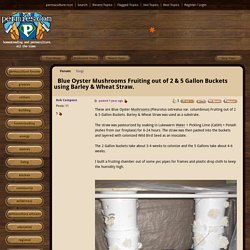
Barley & Wheat Straw was used as a substrate. The straw was pasteurized by soaking in Lukewarm Water + Pickling Lime (CaOH) + Potash (Ashes from our fireplace) for 6-24 hours. The straw was then packed into the buckets and layered with colonized Wild Bird Seed as an inoculate. The 2 Gallon buckets take about 3-4 weeks to colonize and the 5 Gallons take about 4-6 weeks. Mushroom Garden in a Bucket. Monica V Gallardo VTMonica Gallardo Stowe Vermont I can’t think of the exact day we came up with the idea.
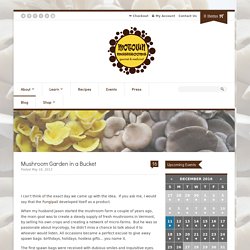
If you ask me, I would say that the Fungipail developed itself as a product. When my husband Jason started the mushroom farm a couple of years ago, the main goal was to create a steady supply of fresh mushrooms in Vermont, by selling his own crops and creating a network of micro-farms. But he was so passionate about mycology, he didn’t miss a chance to talk about it to whoever would listen. All occasions became a perfect excuse to give away spawn bags: birthdays, holidays, hostess gifts… you name it. The first spawn bags were received with dubious smiles and inquisitive eyes. The surprise always came a couple of week later when the bags started to fruit and people could see beautiful mushrooms growing right in front of them.
In the meantime, Jason was experimenting with different kinds of substrates and containers in his own farm. Mushroom Buckets — North Spore. Finding a good home for your bucket: The first step to growing mushrooms is finding a suitable place to put your fruit at home bucket.
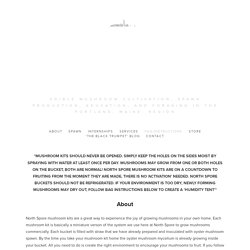
The ideal place for your bucket would be in a room that is between 50-65 degrees fahrenheit and that has some light. This could either be natural light from a window or from any type of light fixture. Mushrooms don't need light to grow so they don't need direct light exposure but some ambient light in the room will help them develop properly. Avoid placing your bucket near a heat source as this can dry out the bucket and prevent mushroom formation.
Growing Blue Oyster Mushrooms at Home - FreshCap Mushrooms. Low tech oyster mushroom cultivation for the home cultivator. The oyster mushroom is a name given to several edible mushroom-forming species of fungi in the genus Pleurotus.
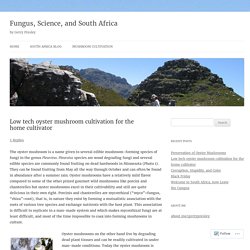
Pleurotus species are wood degrading fungi and several edible species are commonly found fruiting on dead hardwoods in Minnesota (Photo 1). They can be found fruiting from May all the way through October and can often be found in abundance after a summer rain. Oyster mushrooms have a relatively mild flavor compared to some of the other prized gourmet wild mushrooms like porcini and chanterelles but oyster mushrooms excel in their cultivability and still are quite delicious in their own right. Porcinis and chanterelles are mycorrhizal (“myco”=fungus, “rhiza”=root), that is, in nature they exist by forming a mutualistic association with the roots of various tree species and exchange nutrients with the host plant. How to grow oyster mushrooms at home. Have you ever wondered if there’s an easy way to grow mushrooms at home – without needing to buy a new kit each time?
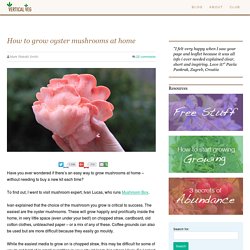
To find out, I went to visit mushroom expert, Ivan Lucas, who runs Mushroom Box. Ivan explained that the choice of the mushroom you grow is critical to success. The easiest are the oyster mushrooms. These will grow happily and prolifically inside the home, in very little space (even under your bed!) On chopped straw, cardboard, old cotton clothes, unbleached paper – or a mix of any of these. Indoor Oyster Mushrooms: Big Yield, Small Spaces. Web Resources: Economics and Farm Planning. North Carolina Cooperative Extension. These Microsoft Excel spreadsheets were developed by Dr.
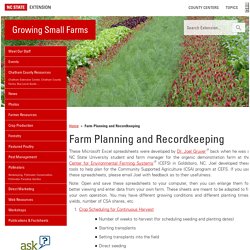
Joel Gruver back when he was a NC State University student and farm manager for the organic demonstration farm at the Center for Environmental Farming Systems (CEFS) in Goldsboro, NC. Joel developed these tools to help plan for the Community Supported Agriculture (CSA) program at CEFS. If you use these spreadsheets, please email Joel with feedback as to their usefulness.
New Farmer Toolbox – Center for Environmental Farming Systems. New Farmer Toolbox JJ Richardson 2016-06-23T15:54:25+00:00 Please note: this project was supported by the Beginning Farmer and Rancher Development Program from 2010 to 2013.
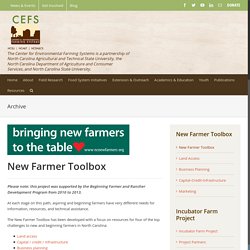
At each stage on this path, aspiring and beginning farmers have very different needs for information, resources, and technical assistance. Garden Task List for the Month. Turnips interplanted with radishes – two spring crops from one bed.Credit Kathryn Simmons During the Month: Lettuce Factory: Sow heat-resistant lettuce outdoors, every 8 to 6 days, #10, 11, 12, 13, 14.
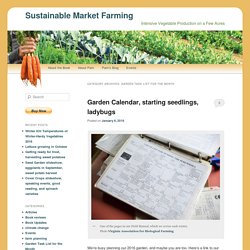
Transplant 120/week (1/3 bed). #7, 8, 9, 10, 11 this month. Deal with potato beetles with Spinosad [or Neem] once larvae are seen, if >50 adults/50 plants or >200 larvae/100 plants. 'pam dawling' on SlideShare. Who We Are. Great Farm fresh beef, lamb, mutton, chicken, turkey, eggs, and produce Fickle Creek Farm offers aspiring farmers the opportunity to learn by doing as apprentices and WWOOFers.

Field Manager Bryan came to Fickle Creek Farm in 2008. He is now an indispensable part of the farm and works tirelessly to keep day-to-day farm operations running smoothly. BeetClock. AgSquared. Where hands on learning comes to life! NC Growing Together. North Carolina Cooperative Extension. Mushroom Mountain. Organic farmers handbook. Carolina Farm Stewardship Association. NC State 2016 Enterprise Budgets- Row Crops. — Written By Derek Washburn The new 2016 budgets are posted after extensive effort to estimate new cost and pricing for farmers in the upcoming year. The new budgets include the following updates: Budgets – Agricultural and Resource Economics. Greens & Herbs Crop Box. How does the CropBox compare to other forms of Agriculture? It has the ability to grow 1 acre of crops in a single shipping container while using 90% less water Conventional Agriculture. Discover best practices for your farm. Wit Meets Grit – Rolling up our sleeves and having fun. CobraHead Weeder & Cultivator – Best Garden Tools.
Web Soil Survey - Home. Fenugreek seeds. Where hands on learning comes to life!